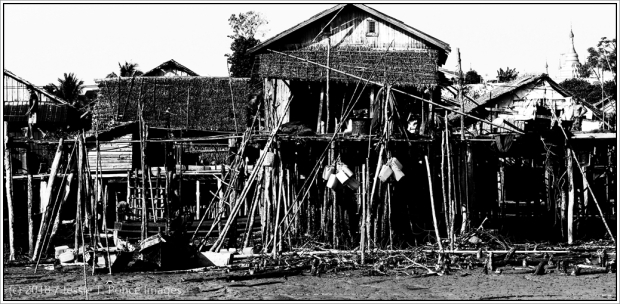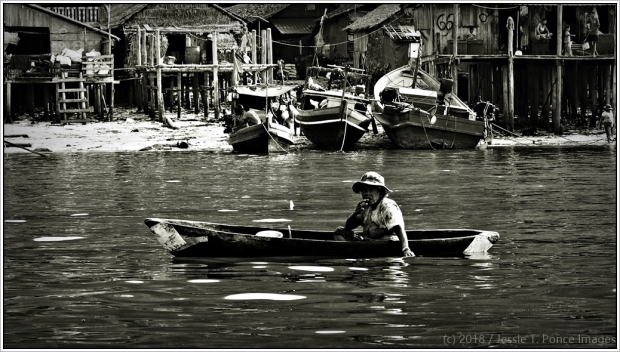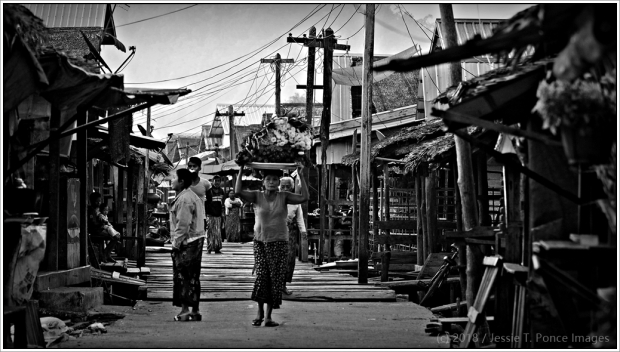Andaman Sea: Life on the Islands
February 2018: A visit to the farthest islands in the Andaman Sea was the main and most memorable adventure of the month. The farthest of the islands is at least six hours from the nearest Myanmar city of Myeik via a 600 HP speedboat. On an ordinary boat, the travel time can be boring and twice as long.
Generally, the islands are beautiful and characterized by pristine beaches, abundant seafood, and stunning sunsets. However, because of their geographic isolation, life on these islands can be very difficult. I collected a number of photos that portray life of these islands over the days as we hopped from one island to another and spent time with these intrepid villagers. Here are some of them.

Stilts: The frontage of island communities is typically comprised of a set of houses, one or two jetties, and other related structures that are perched on wooden stilts above the Andaman tide. There are tracts of land inside the islands but majority of the villagers prefer to build their communities above the shore.

Seafarers: Understandably, the main source of income among island villagers is fishing and harvesting the resources afforded by the sea. Boats of different sizes and capabilities are the main means of transportation between communities and the most crucial equipment for livelihood activities.

Seaworld: The vast sea and the many other surrounding islands comprise the main “world” of the island villagers.

Income Sources: Processing dried shrimp and shrimp paste is among the most common livelihood activities for women villagers. In one of the villages, a couple of women demonstrate how they prepare big balls of shrimp paste before they get transported by the traders to Thailand or to some cities in Myanmar.

A village trader sorts a tray of mud crabs before transporting them to the closest markets and restaurants which could be many hours away.

Isolation: The remoteness of these island communities heavily affect the villages’ economy. It normally takes days and a small fortune to purchase basic supplies and construction materials. These boys play on a few bags of cement which, among the poor households, is almost a luxury.

Under the Stilts: At least once a day, when the tide is low, the cramped spaces below the stilted structures provide a small area for young boys to play their favorite ballgame.

Thatch: Poverty is evident among these communities. A typical island village is comprised of a few rich traders and business owners with the rest of the village households almost totally dependent on the generosity of their rich benefactors from fishing boats, nets and other fishing gear, to cash loans for basic and emergency household needs.

Daily Plight: Inside these island villages, a network of wooden boardwalks connect the stilted households with the supply stores, coffee shops and whatever public office is present in the villages. Bigger and economically better off villages have regular access to electricity and water but the smaller ones struggle on a daily basis to access these basic utilities.

Usual Guests: The usual visitors to the islands are crews of the big boats that bring in supplies from the cities and buy the catch and other produce from the villagers.

Simplicity: As can be expected, life on these islands is hinged on modesty and simplicity. Young people have very limited access to better opportunities which are mostly available only beyond the shores of these islands. Alternatives outside of daily household and livelihood routines are also simple and not many but majority of the villagers appear to be happy and contented with what they have.

Hope: Despite these difficult conditions, villagers still see some hope for their communities. When, once upon a time, they had zero access to basic services; the government has reportedly been gradually paying attention to them in recent years. Basic health and education services have become more accessible and village households are getting more opportunities to get consulted on their development needs. That the younger generations will see a better island life than what they had — that is the main hope of the village elders.










these are really great pics –
LikeLiked by 1 person
great pictures and resembles alot with my country Papua New Guinea. Our coast people also prefer to live on long stilts over water….Yet still, nice photos
LikeLiked by 1 person